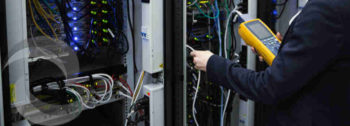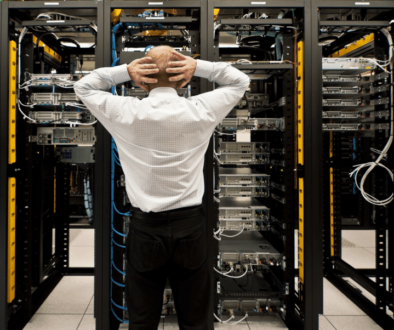How to Maintain Your Server
Many enterprises hire a professional service for maintaining their servers. But not all companies can afford this service, especially small and medium-sized companies.
We have created a comprehensive guide on how to maintain your server so that it is always up and running! You need to devote some time to your servers and check their health and performance every so often.
Let’s see how to maintain your server properly:
Frequency of Preventive Maintenance is the Key
Running a regular maintenance schedule is the best and simplest way to keep your server and the hardware working for years. Checking the hardware and OS from time to time will help identify problems before they become serious and cause server crashes.
Keep a schedule and follow it to ensure your server is working fine and without fault.
Look Out for Server Warnings
If you are not using professional server management service, then you need to keep an eye on the warning signs given by your server. Most systems have ways to predict drive failures and other issues.
Different manufacturers have different warning systems and there is no industry standard. Some of them use the SMART or the Self-Monitoring, Analysis, and Reporting Technology for drive monitoring. But it is also not implemented in the same way by all manufacturers.
Some servers may deliver a warning of drive failure through the OS while others can be identified from the BIOS. You may also get notified through lights on the physical server.
Knowing how your server generates warning is crucial to identifying the symptoms of a probable drive failure. Research your server and keep an eye on the warnings signs produced by it.
Dust it Out
It may sound cliché for us to remind you to keep your servers clean from dust and grime, but it is really important as it impacts the performance and health of your server.
Dust accumulates over time on the CPU and case fans. It can make them inefficient and with time they may stop working completely. As a result, your power supply can get overheated and fail.
The heat sinks also gather dust and become clogged. It cannot cool the system properly as the amount of air passing over it is reduced. The CPU can get overheated and start malfunctioning and making computational errors.
Though servers come with an auto-shutdown feature when they overheat, you must make it a point to clean them periodically. Remove the covers and clean the interior every six months or so. You can use canned air and even small vacuum cleaners to get dust off the various components.
Reboot it Regularly
Make it a point to reboot the server regularly- once a month or week, if possible.
When you reboot the server, it carries out the POST process or Power On Self-Test. The range of diagnostic processes makes sure that all hardware is functioning properly.
Monitor Disk Usage
Prevent using your disks as an archival system. Clear old and unused emails, logs, and versions of software that unnecessarily eat up system resources.
Clearing your system of unused files and software versions keeps it free of security issues. You can also run faster recovery due to the small data footprint.
If you are nearing disk capacity, say 90% or more, then cut down on your usage or install additional storage. You can face data loss, corrupt database tables, and even a non-responsive server if the partition nears 100%.
Disk utilities can help identify bad sectors and transfer data to new ones. You should consider replacing your hard drive if every analysis reveals 3 or 4 bad sectors each time.
Keep your System Updated
It is a must to update your OS regularly to limit security threats. It is better to automate the update procedure which prevents missing out on important releases. If you can’t automate updates, then make a schedule and stick to it.
Scan for updates at least once a week for current OS versions to ensure that your system stays up to date. For older OS versions, you can run updates once a month.
The same goes for your server control panel. Look for updates for the control panel and also the software it manages. Keep your web applications like WordPress updated as well. Web applications are responsible for almost 95% of security issues.
Analyze Server Utilization
Your server should have enough resources to work efficiently and run workloads. Apart from the disks, check the RAM, CPU, and network utilization.
If you have reached the limits of your resources then upgrade the server or migrate to a new server. You can use any performance monitoring application to get the performance report of your server.
Check the UPS Batteries
Though UPSs are not part of the server, they are still responsible for keeping them running in case of power failures.
Over time the batteries of an aging UPS starts losing its capacity. After a long period of time, the weak batteries won’t have the capacity to sustain the server for more than a few minutes. Any downtime can translate to lost productivity and financial losses.
You should check the batteries of your UPS twice a year by finding out how long they can sustain the server. If you see a drop in performance, you can replace the batteries or the UPS.
Ensure that Backups are Functional
Your backups must be working properly to avoid any incidents of data loss. Carry out recovery tests to determine the backup process is functional. It is a must to check your backup before you delete or make any changes to critical data.
In conclusion, staying pro-active can help you prevent server failures. Use an automated performance and monitoring tool to recognize system errors before they become big problems. Also, carry out preventive maintenance from time to time.





